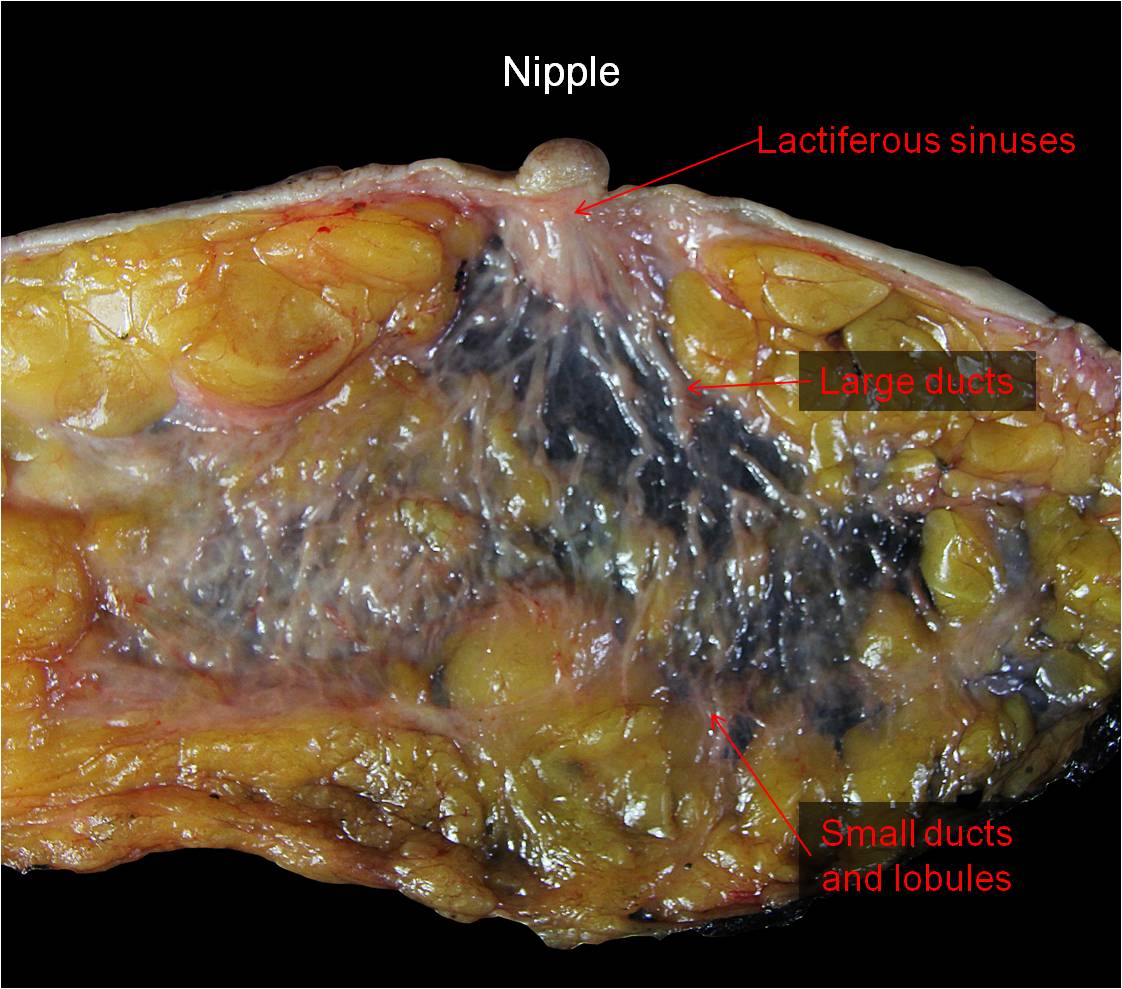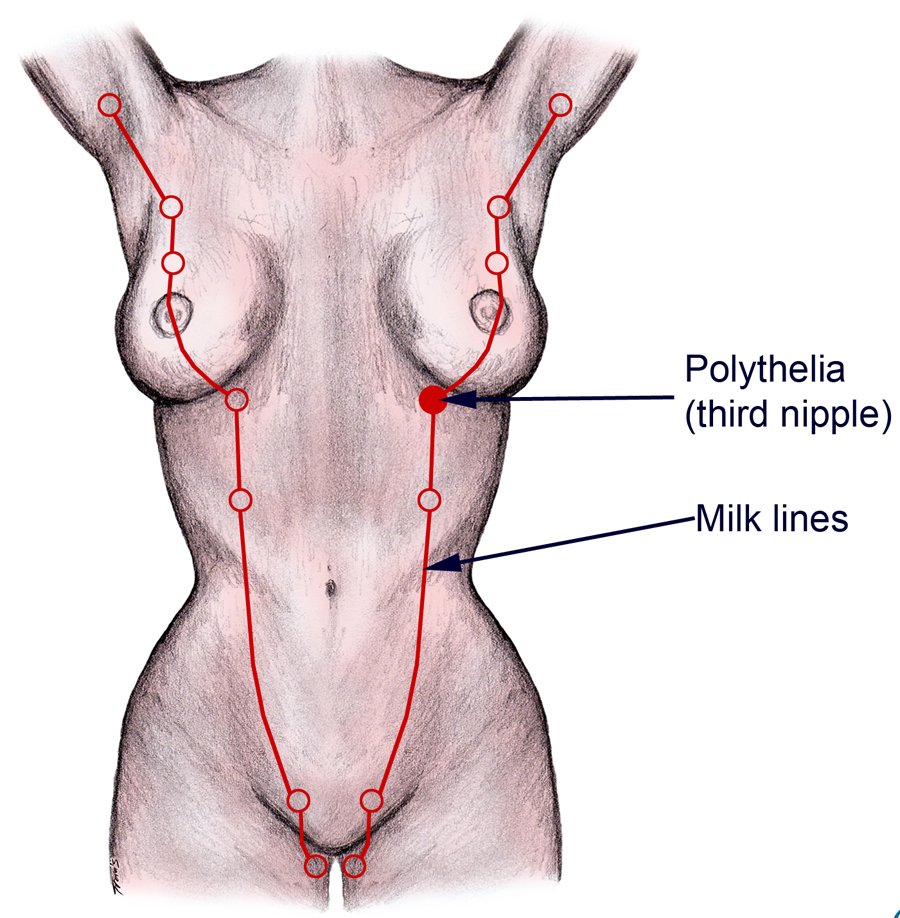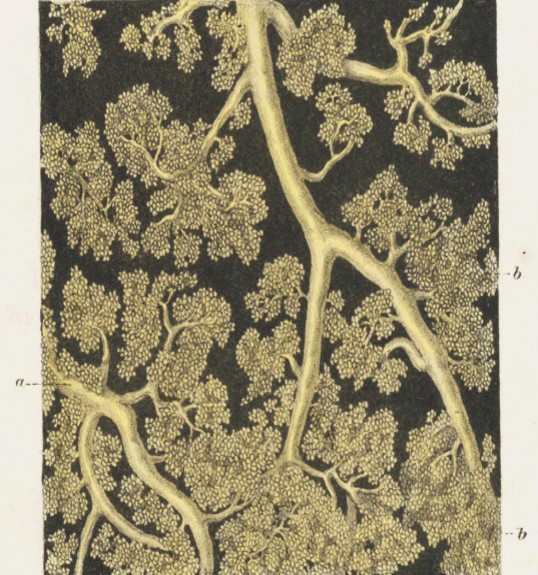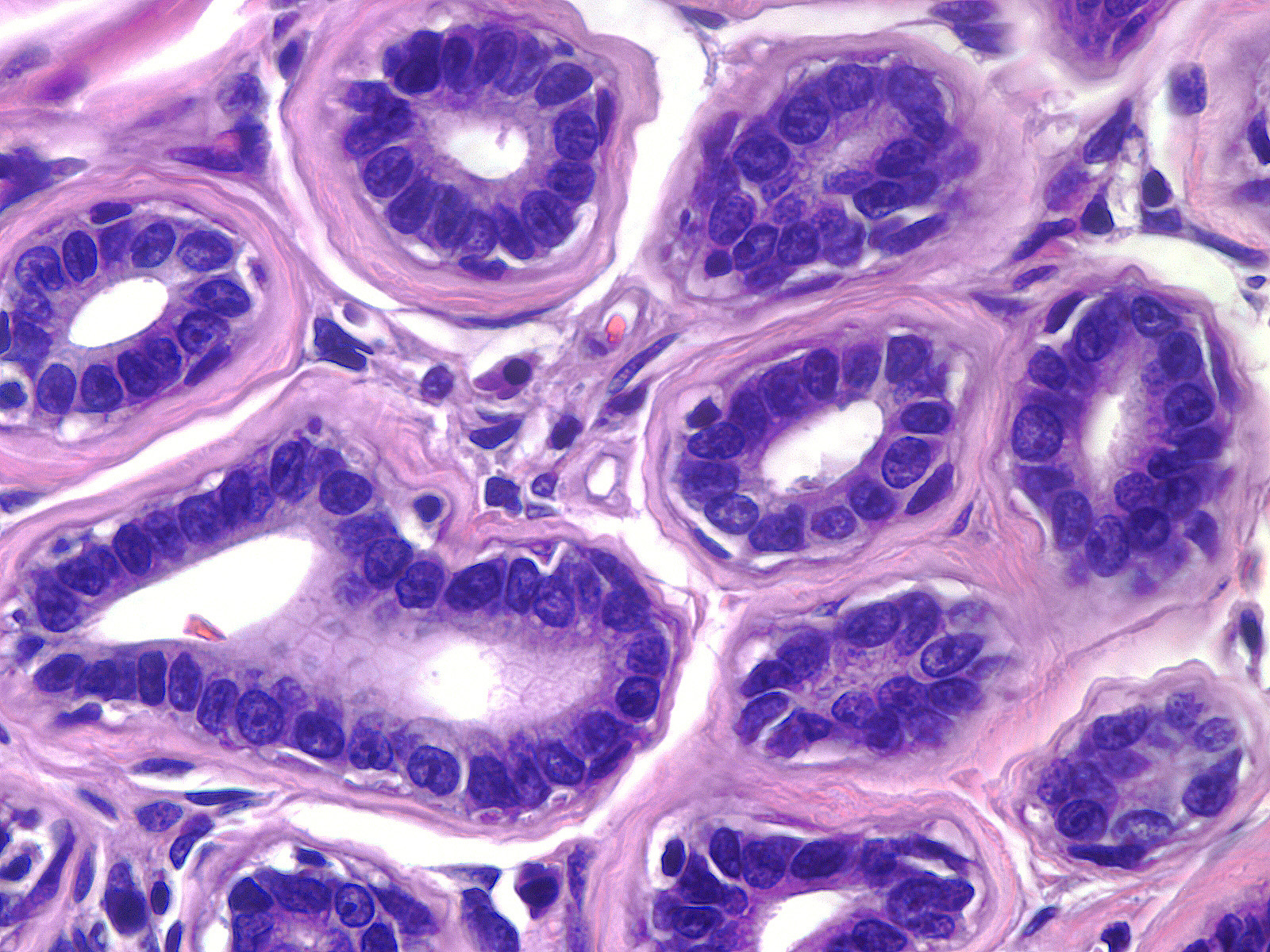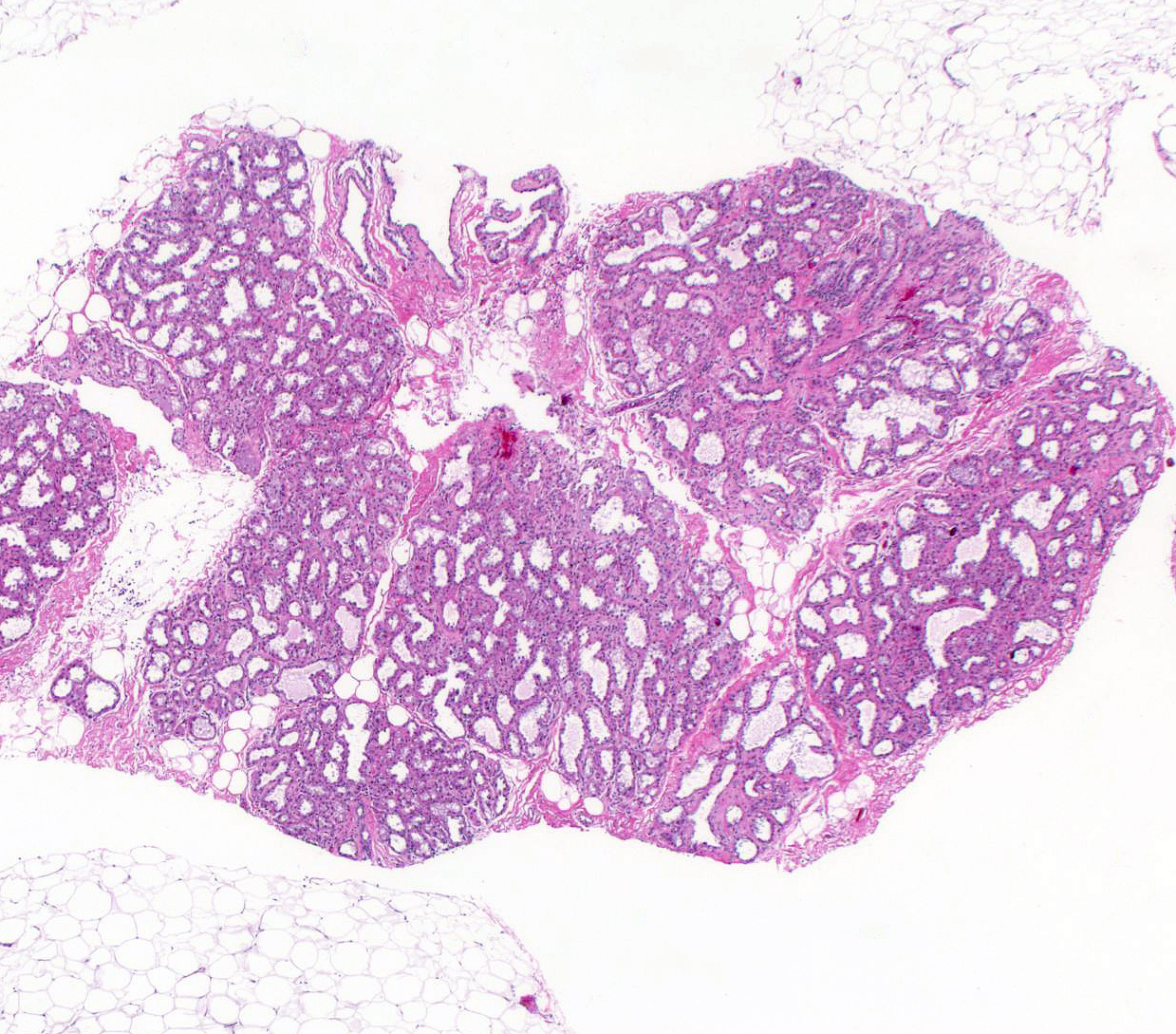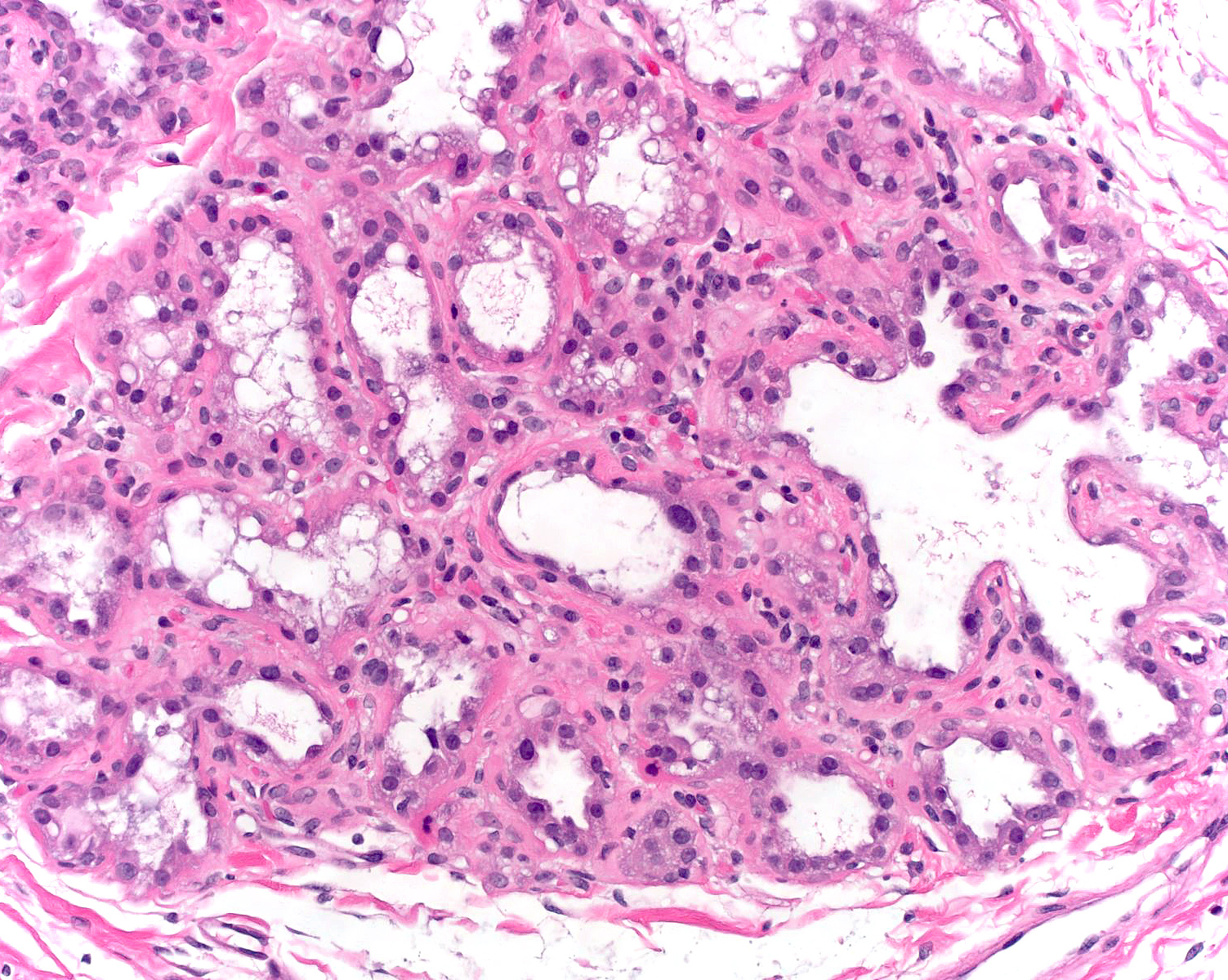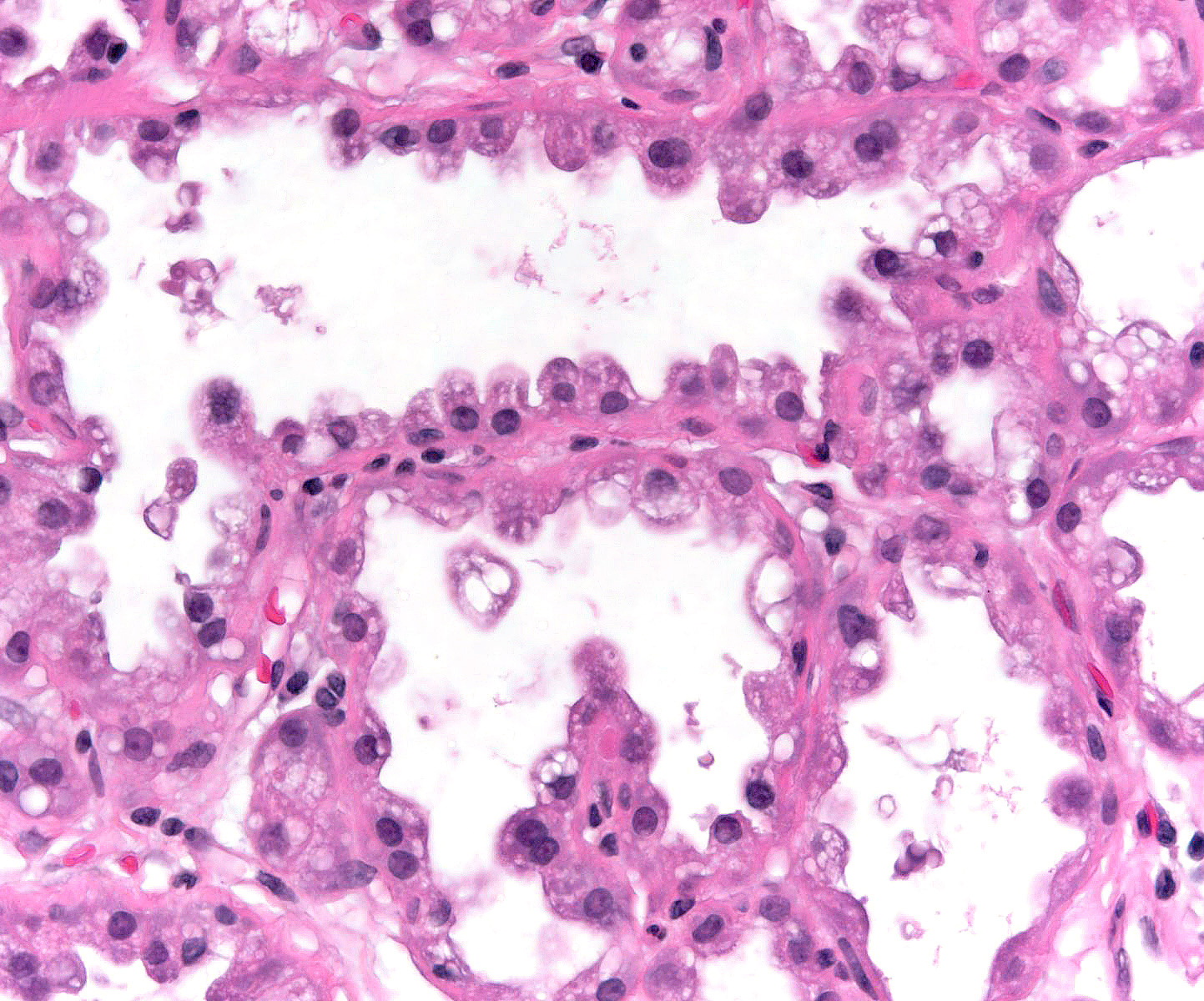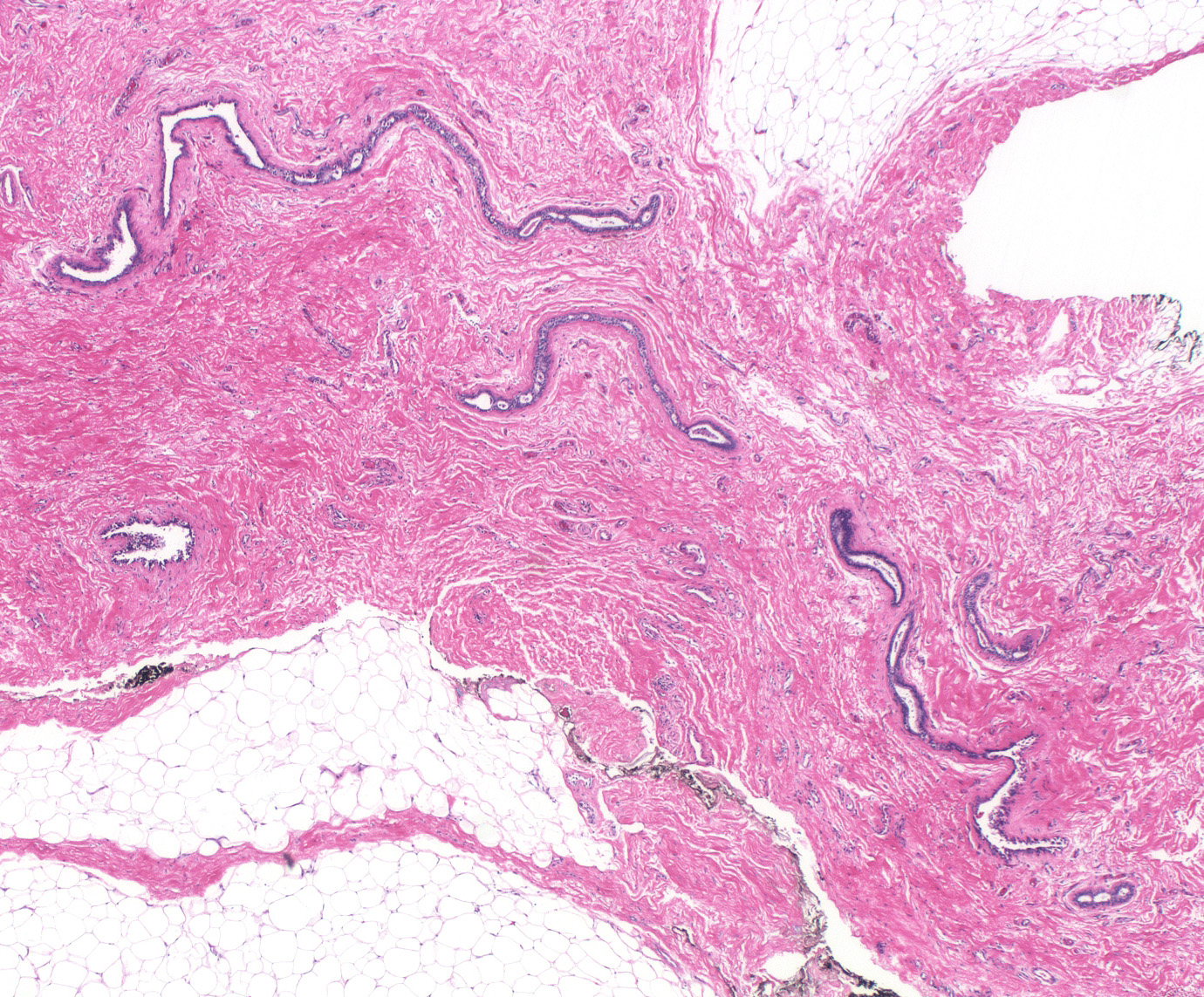Location
Breast tissue occasionally forms beyond the confines of the gland itself. This ectopic tissue can occur anywhere in the milk line, a region that runs from the axilla to the groin. The misplaced tissue can create an accessory nipple or a mass composed of primitive breast tissue. The ectopic tissue can show physiological changes and can give rise to mammary lesions such as pseudoangiomatous stromal hyperplasia, fibroadenomas, and carcinomas.
Glandular Tissue
Mammary glandular tissue consists of arborizing ducts and terminal lobules. The largest ducts, termed lactiferous sinuses, drain onto the skin of the nipple. They number between 15 and 25, have diameters of a few millimeters, and display folded, stellate configurations when cut in cross section. The lactiferous sinuses form a compact bundle in the nipple and extend posteriorly to become large ducts. As the large ducts ramify within the gland, they diminish in caliber and branch to form small ducts, ductules, and extralobular terminal ductules, which together comprise the conducting portion of the mammary glandular tree. The extralobular terminal ductules drain terminal duct lobular units. The secretory component of the gland consists of intralobular terminal ductules and their attached acini.
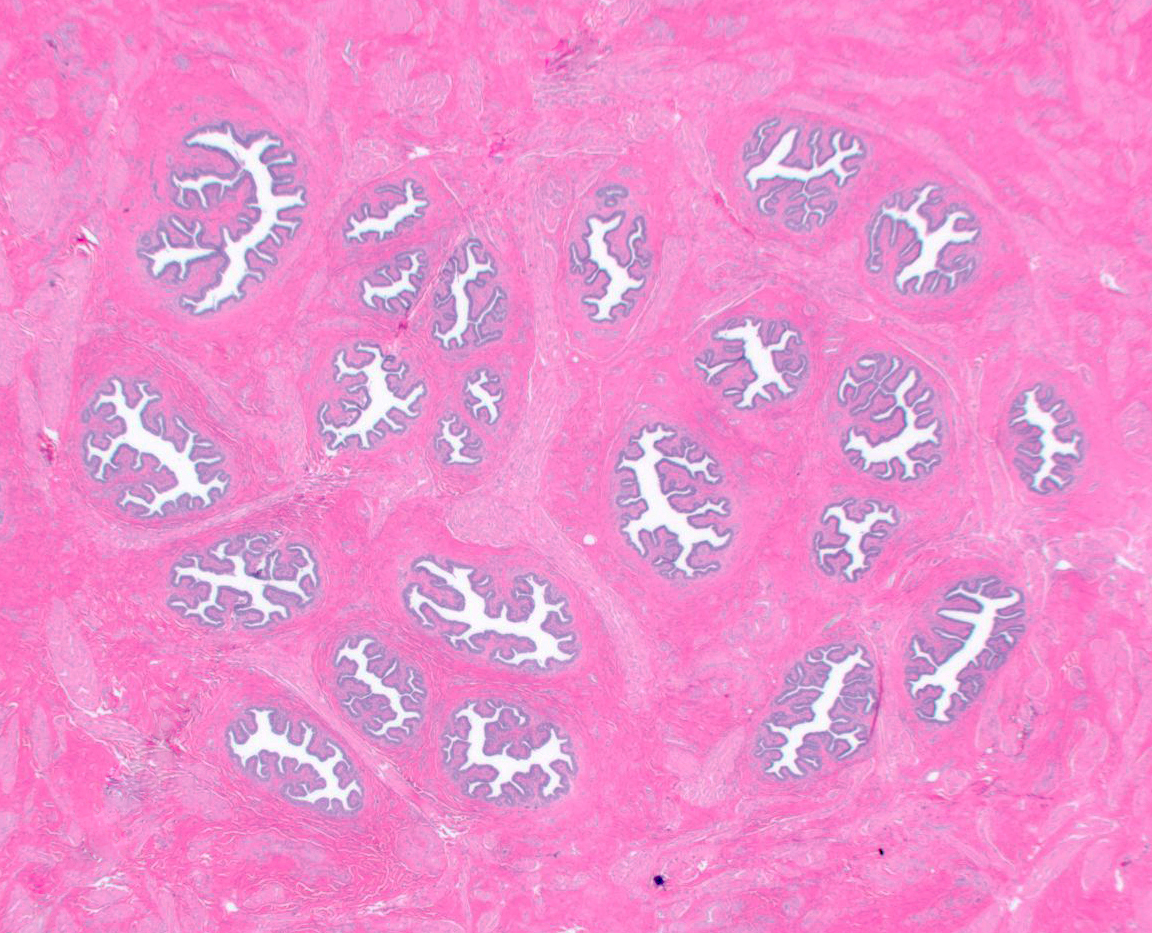 |
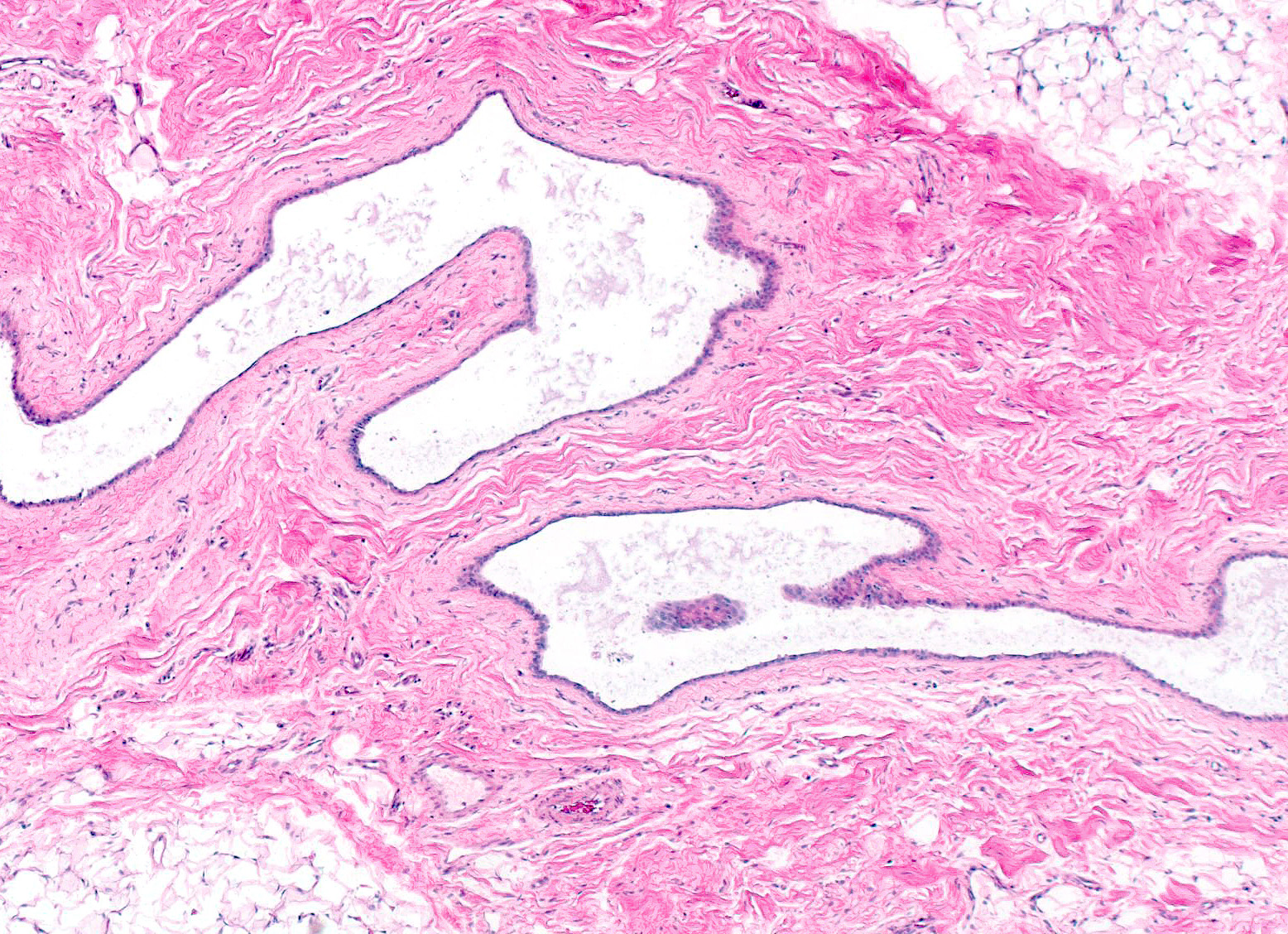 |
| Lactiferous sinuses connect the breast glandular tissue with the skin of the nipple. |
Large ducts branch and narrow, forming the main conductive pathways. |
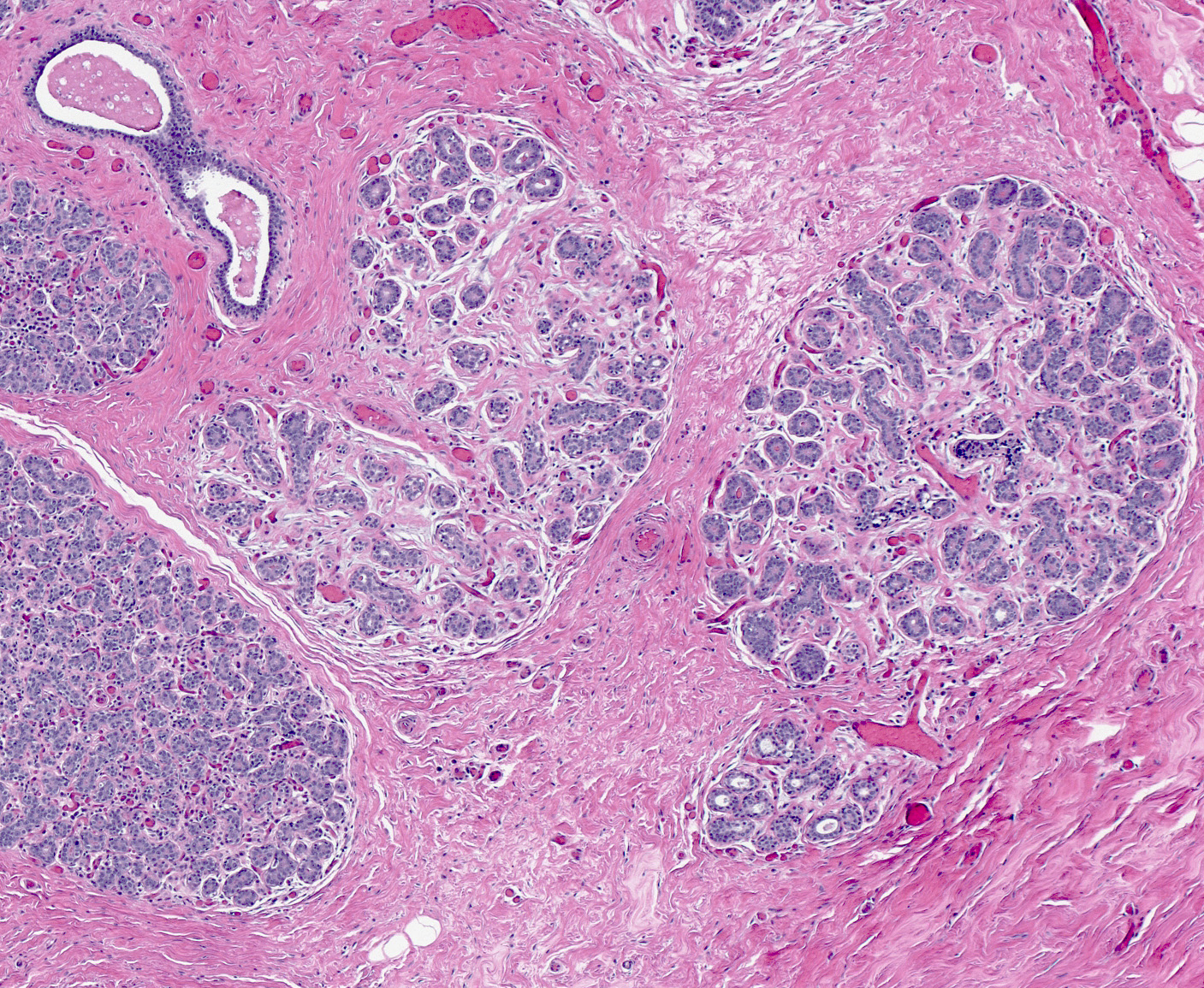 |
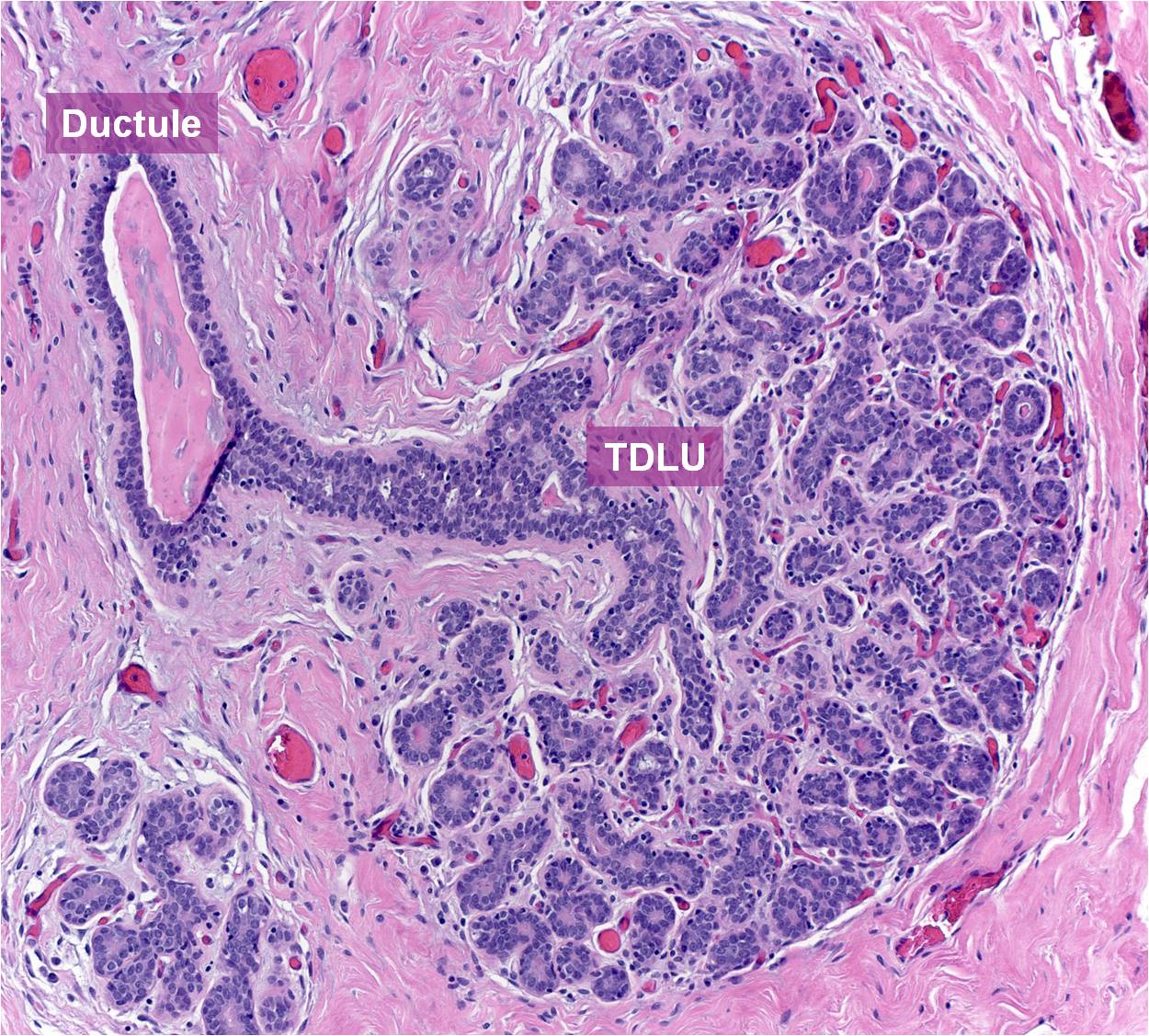 |
| Small duct and lobules |
Ductule and terminal duct-lobular unit (TDLU) |
The epithelium that lines the glands appears similar throughout the breast. The epithelium consists of two layers of cells: luminal cells, and myoepithelial cells. The luminal cells display polarization. They exhibit columnar or cuboid shapes and they possess oval or round nuclei, small nucleoli, and varying amounts of eosinophilic cytoplasm. The apical surface abuts the gland lumen, and the basal end attaches to the basement membrane. Luminal cells carry out secretory and absorptive functions. The myoepithelial cells appear flattened along the basement membrane. Being covered by the luminal cells, the myoepithelial cells do not touch the gland lumen. They contain small, triangular nuclei, and it is often difficult to see their cytoplasm. Myoepithelial cells form dendrite‑like cell processes, which extend along the basement membrane and sometimes among the luminal cells. They have contractile properties and they contribute to the formation and maintenance of the basement membrane. Pluripotent cells capable of differentiating into both luminal and myoepithelial cells occupy basal positions throughout the epithelium. T-cells and histiocytes often percolate among the epithelial cells. A layer of homogeneous, eosinophilic basement membrane underlies the epithelium.
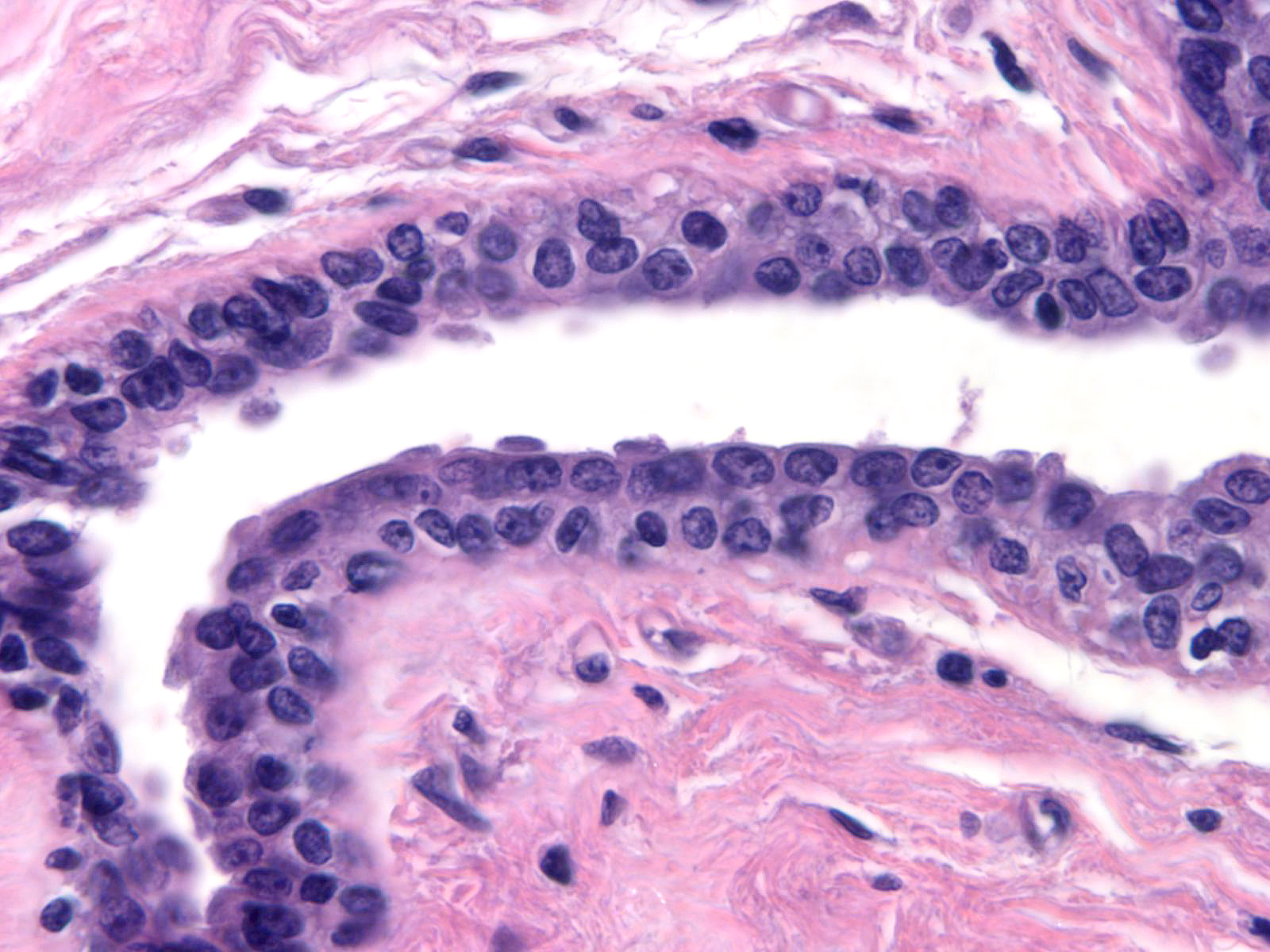 |
|
|
|
|
|
Normal ducts are lined by two layers of epithelial cells: outer luminal cells and inner myoepithelial cells. Basement membrane underlies the epithelium.
Acini are also composed of outer luminal epithelial cells and inner myoepithelial cells. These luminal epithelial cells are plump compared to the myoepithelial cells. Basement membrane enshrouds the epithelium, a thin barrier separating the epithelial cells from the numerous capillaries in the specialized stroma.
During pregnancy, the terminal duct lobular units enlarge as milk-producing glands sprout from the existing acini.
The lumens of the milk- producing glands dilate and the luminal epithelial cells develop abundant vacuolated cytoplasm.
The luminal cells of lactation feature one or two large nuclei and prominent nucleoli. Loosening of the intercellular attachments allows the cytoplasm of the luminal cells to bulge into the lumen, which also contains eosinophilic secretion and bits of sloughed cytoplasm.
Mammary tissue in both boys and girls appears identical until puberty. The glandular tissue of the male breast does not develop further and does not display the complexity seen in the adult female breast. Mammary glandular tissue in men consists only of simply branching ducts, although in uncommon situations very simple lobules can form.
Quiz
Start Quiz
